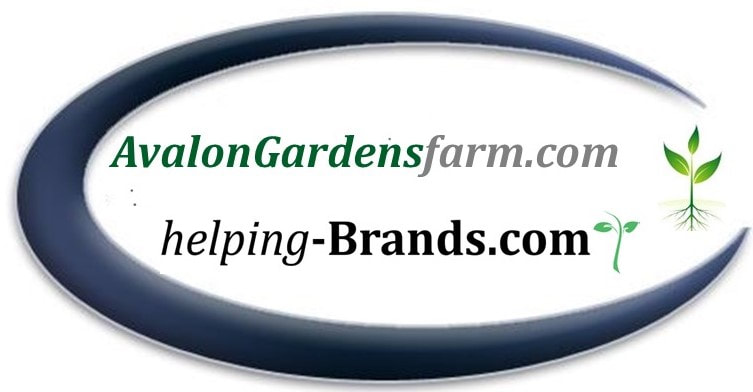Controlled Environment Agriculture
CEA
Urban Farms, Greenhouses, Indoor/Vertical Farming, Hydroponic and Aquaponics
helping economic and workforce development.
helping our communities.
2024
“We forecast an increase in overall marine seafood production of about 20% to 2050,” said Bente Pretlove, Program Director of Ocean Space at DNV Group, in the report. “While capture fisheries output is stagnant, marine aquaculture will double and finfish production almost triple in this period.”
In 2023, the world's production of finfish is estimated to be around 39.6 million metric tons (MMT), which is a 1.8 percent increase from 2022. Global production is expected to increase by 4.3% in 2024 and 3.9% in 2025, if there are no unforeseen biological problems.
Finfish species include: Baitfish, Catfish, Salmon, Striped bass, Tilapia, Trout. Finfish aquaculture uses many different farming methods, including:
The West Coast's commercial finfish aquaculture process starts in land-based hatcheries. Salmon are then transferred to in-water net pens or larger land-based tanks for grow-out and harvest. According to a UN study, aquaculture can improve food security and nutrition by increasing the amount of seafood available for people to eat. 2023Another Vertical-Farming Company Files for Chapter 11
AppHarvest pursues financial and operational transition to reduce outstanding liabilities 2022UNFI brings indoor farming to its distribution centers
The distributor and vertical farming company Square Roots entered a new agreement to add Square Roots' indoor farms on-site at select UNFI distribution centers. Oishii, grower of extraordinarily expensive strawberries, opens 74,000 sq. ft. indoor farm in Jersey City www.oishii.com
Opening of facility will allow it to lower price of 8 large strawberries from $50 to $20 1.10.22 Food Lion Adds Hydroponic Produce in 300+ Stores
Retailer partners with Vertical Roots to provide long-lasting non-GMO lettuce New Jersey Ag grantsNJ Farm Bill Dept of Agriculturehelping the environment sustainable development.
www.ventureradar.com/keyword/Hydroponics
2021
Projects that inspire.In Jackson Hole, Wyoming, a town centered around its tourism industry, 78 percent of people living with disabilities are unemployed. But now, a local farm is working to change that. In partnership with the Economic Hardship Reporting Project, Matter of Fact Correspondent Leone Lahkani travels to Wyoming to see how Vertical Harvest is creating economic options for people with disabilities.
Vertical Harvest How A Farm Provides Upward Mobility for People with Disabilities Disney hydroponicsHydroponics is a method of growing plants using just water and nutrients, and Disney uses this technology throughout their greenhouses. ... But it's quicker than growing crops in the soil, it uses less water, and it allows growers to stack plants closer together.
Vertical FarmsTop Vertical Farms
AquaponicsFeeding the World While Protecting Our Oceans
According to the United Nations, the planet must produce 70 percent more food by 2050 to meet growing global hunger needs. The World Wildlife Fund says approximately 3 billion people in the world currently rely on seafood as a primary source of protein. The Bumble Bee Seafood Company is working closely within the industry and with NGOs and governments globally to rebuild ocean abundance and diversity to ensure seafood remains a viable and vital long-term source to feed a surging population. American shoppers are also increasingly sharing concerns about the health of the planet. According to a 2020 study conducted by IBM and the National Retail Federation, 57 percent of consumers surveyed said they were willing to change their buying habits to reduce their impact on the environment. And in a GlobeScan survey from that same year, 55 percent of U.S. seafood consumers – including many who live hundreds of miles from an ocean shoreline – agreed that fish and other seafood should only be consumed from sustainable sources. Aquaponics refers to a food production system that couples aquaculture (raising aquatic animals such as fish, crayfish, snails or prawns in tanks) with hydroponics (cultivating plants in water) whereby the nutrient rich aquaculture water is fed to hydroponic grown plant, involving nitrifying bacteria for converting ammonia into nitrates.
As existing hydroponic and aquaculture farming techniques form the basis for all aquaponic systems, the size, complexity, and types of foods grown in an aquaponic system can vary as much as any system found in either distinct farming discipline. HydroponicsHydroponics is a type of horticulture and a subset of hydroculture which involves growing plants (usually crops) without soil, by using mineral nutrient solutions in an aqueous solvent. Terrestrial plants may grow with their roots exposed to the nutritious liquid, or, in addition, the roots may be physically supported by an inert medium such as perlite, gravel, or other substrates. Despite inert media, roots can cause changes of the rhizosphere pH and root exudates can affect rhizosphere biology.
The nutrients used in hydroponic systems can come from many different sources, including fish excrement, duck manure, purchased chemical fertilizers, or artificial nutrient solutions. Plants commonly grown hydroponically, on inert media, include tomatoes, peppers, cucumbers, strawberries, lettuces, cannabis, and model plants like Arabidopsis thaliana. Hydroponics offers many advantages, notably a decrease in water usage in agriculture. To grow 1 kilogram (2.2 lb) of tomatoes using intensive farming methods requires 400 liters (88 imp gal; 110 U.S. gal) of water; using hydroponics, 70 liters (15 imp gal; 18 U.S. gal); and only 20 liters (4.4 imp gal; 5.3 U.S. gal) using aeroponics. Since hydroponics takes much less water to grow produce, it could be possible in the future for people in harsh environments with little accessible water to grow their own food. Contents
1 History 2 Techniques 2.1 Static solution culture 2.2 Continuous-flow solution culture 2.3 Aeroponics 2.4 Fogponics 2.5 Passive sub-irrigation 2.6 Ebb and flow (flood and drain) sub-irrigation 2.7 Run-to-waste 2.8 Deep water culture 2.9 Rotary 3 Substrates (growing support materials) 3.1 Expanded clay aggregate 3.2 Growstones 3.3 Coconut Coir 3.4 Rice husks 3.5 Perlite 3.6 Vermiculite 3.7 Pumice 3.8 Sand 3.9 Gravel 3.10 Wood fiber 3.11 Sheep wool 3.12 Rock wool 3.13 Brick shards 3.14 Polystyrene packing peanuts 4 Nutrient solutions 4.1 Inorganic hydroponic solutions 4.2 Organic hydroponic solutions 4.3 Additives 4.4 Tools 4.5 Mixing solutions 5 Additional improvements 5.1 Growrooms 5.2 CO2 enrichment See also References |





























